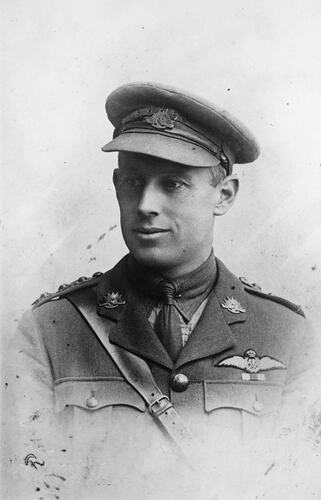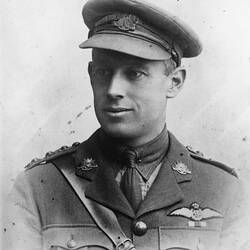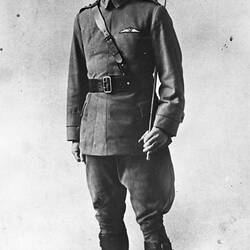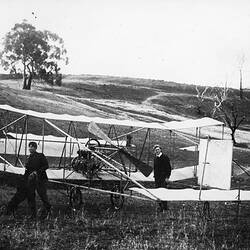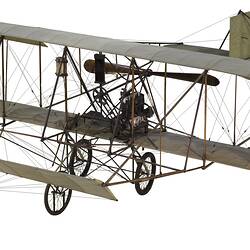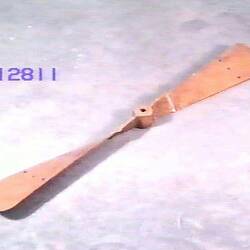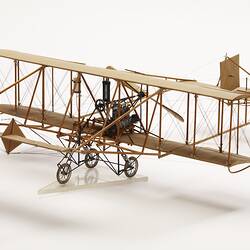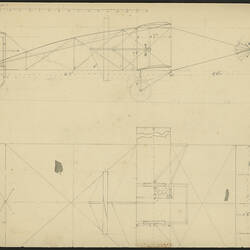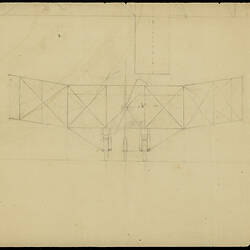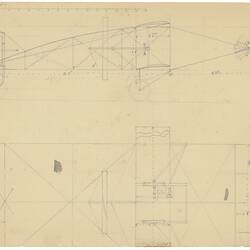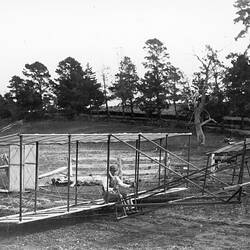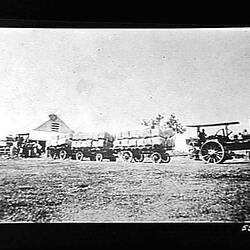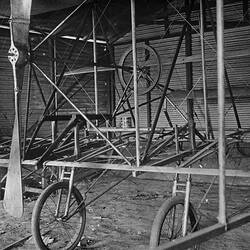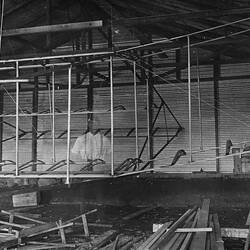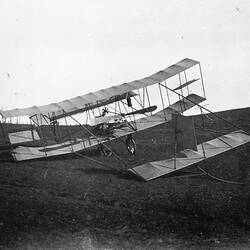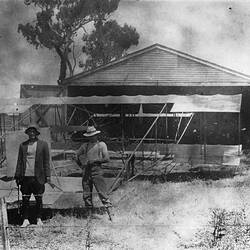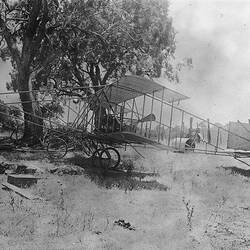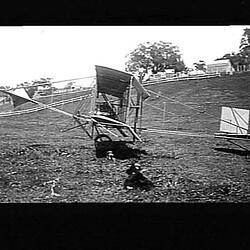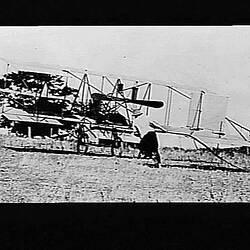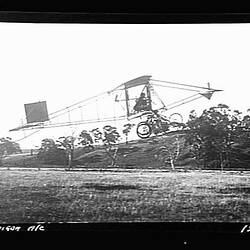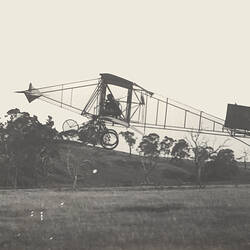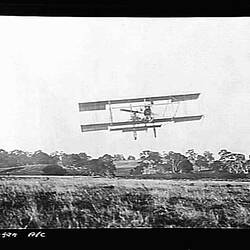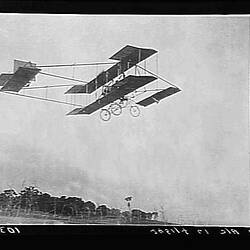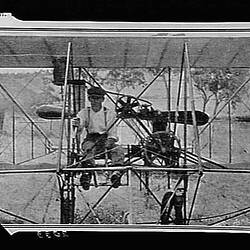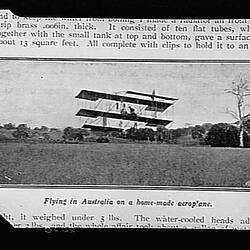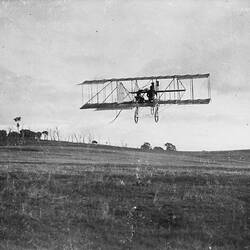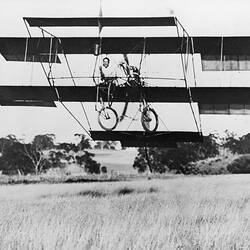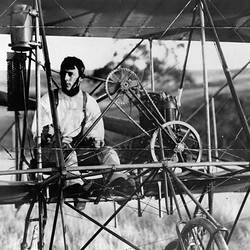John Duigan joined the Australian Flying Corps (AFC) in March 1916 as a lieutenant, becoming one of the original members of No. 2 Squadron formed at Point Cook. After completing initial flying training on Bristol 'Boxkite' and BE2a biplanes at Point Cook, he embarked for Britain along with most other personnel of the unit on the HMAT Ulysses, arriving in December 1916. Shortly afterwards his wife Kathleen followed him to Britain to work as a nurse.
Over the following nine months he completed further flight training on BE2e and Avro 504 aircraft and various specialist training courses in wireless and camera operation, gunnery, bombing and artillery observation duties. In August 1917, Duigan was promoted to captain and detached from the squadron (by then known as No.69 [Australian] Squadron Royal Flying Corps) to become an instructor with No.30 Training Squadron AFC. He completed an advanced flying instruction course at Gosport and in a three month period made over 300 flights and 860 landings supervising trainee pilots. In December 1917, Duigan rejoined No.69 Squadron which was then operating RE8 two-seat corps reconnaissance aircraft at Bailleul in France. He became the leader of B Flight following the death of the previous flight commander in an accident. Captain John Duigan flew RE8 B2271 mostly on artillery flash patrols to locate German gun positions but also performed photographic reconnaissance patrols and bombing attacks. The unit was re-designated as No.3 Squadron AFC in January 1918.
On 21 April 1918, Duigan's flight was attacked by several Fokker Dr.1 triplanes led by Rittmeister Manfred von Richthofen (alias 'The Red Baron'), Germany's leading fighter pilot, who had shot down 80 allied aircraft. The triplanes were chased away by Sopwith Camels of No.209 Squadron RAF and von Richthofen pursued one Camel over the Australian front lines, flying at low level along the Somme River Valley. He was hit by a bullet fired from the ground and crashed near the Bray-Corbie Road. Richthofen's body was taken to No.3 Squadron's airfield at Poulainville and buried on 22 April 1918 with full military honours. Duigan was one of the pallbearers. Earlier in the day Duigan had flown a reconnaissance patrol during which he and his observer Lieutenant Alec Paterson spotted a very large muzzle flash from an 11-inch railway-mounted naval gun, which was later captured and brought to Australia as the 'Amiens Gun'. The barrel still exists at the Australian War Memorial in Canberra.
On 9 May 1918, Duigan and Paterson were attacked by four Dr.1 triplanes from Jasta 6 near Villers-Bretonneux. Paterson was knocked out and the RE8 was soon riddled with bullets which wounded Duigan in four places as fuel spilled over him and fire broke out. He put the aircraft into a spin to shake off the enemy machines and force landed near the front line. He insisted the exposed photographic plates were dispatched to headquarters and his unconscious observer rescued before he himself was taken to hospital. Both Duigan and Paterson subsequently recovered from their wounds after being evacuated to London. For his actions on this occasion Duigan was awarded the Military Cross. Credit for shooting him down was given to Vizefeldwebel Franz Hemmer. In five months at the front Duigan had made 99 separate flights accumulating over 141½ hours flying time, almost all behind enemy lines.
As a result of his wounds and the trauma associated with his final engagement Duigan was not able to resume combat duties and finished the war as the acting Commanding Officer of No.7 Training Squadron AFC in Britain.
References:
Crotty, David, A flying life: John Duigan and the first Australian aeroplane, Museum Victoria, Melbourne, 2010.
Kendall, F.J., 'John Robertsoon Duigan, a pioneer aviator in Australia', The Victorian Historical Magazine, No.45, 1974.
London Gazette, 18 Sept 1918.
Duigan, John Robertson (1882 - 1951), Australian Dictionary of Biography Online Edition, http://adbonline.anu.edu.au/biogs/A080384b.htm.
More Information
-
Keywords
-
Localities
Point Cook, Victoria, Australia, England, Great Britain, France, Belgium
-
Authors
-
Article types
